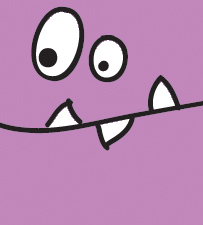The Day Marketing Automation Stopped Working
How the Laws of Engagement Can Save the Day
There’s a problem brewing in B2B marketing land. The stuff that used to work doesn’t seem to be working as well anymore. Below is a chart from Marketing Sherpa’s 2012 B2B Marketing Benchmark Report (click here for the 2012 report excerpt). You’ll notice that the 1,745 B2B marketers in the study are losing faith in every marketing tactic there is. And shiny, new marketing automation software doesn’t seem to be helping. Presumably, this means that the leads marketers are generating are not converting to sales at the expected rate. What’s going on?
In the world of possibilities (assuming there’s actually a market for the product or service being offered), here are the usual suspects for marketing underperformance:
1. The marketers’ targeting is off (they’re attracting the wrong people).
2. The marketers’ offers are off (they’re attracting the right people, but the incentive to create real engagement is too low).
3. The marketers’ communications are off (they’re attracting the right people, the offer is good, but the value of the offer is being lost on the audience).
Desktop Publishing didn’t make everyone a graphics whiz
When desktop publishing became available to the average person years ago, a funny thing happened. The quantity of brochures and flyers increased significantly, but the overall design quality plummeted. Putting enabling technology in people’s hands didn’t make them great designers. The principles of good design didn’t change. It just became easier to disseminate mediocre design.
Fast-forward to today, and we see the same thing happening with marketing technologies such as email, landing pages, pay-per-click ads, social media of all stripes, Search Engine Optimization, and marketing automation systems. The quantity of “stuff” marketers are producing has increased exponentially. As in the past, putting enabling technology in people’s hands didn’t make them great marketers. The rules of good marketing remained the same.
In a nutshell: just because you can, doesn’t mean you should.
So in the interest of contributing something useful to the whole discussion, here are some baseline marketing strategies that are too often lost in the rush to get the next email campaign out the door. We call them the Laws of Engagement, and if you want to convert more prospects to sales, you have to honor the Laws ahead of the Technology.
1. The Law of Targeting
If you find more customers like your best customers, you will sell more.
The Law of Targeting states that in order to engage your prospects, you’ve got to be talking to the ones who will buy. Well, how obvious is that? Apparently not very. Most companies violate this Law every day, by targeting too widely and pursuing too many prospects who don’t tightly match what they have to offer. The secret to Targeting is to identify those prospects who share the same business pain as your best customers, then target them.
2. The Law of the Offer
Your offer must be valuable, timely, and relevant.
The Law of the Offer states that in order to engage your prospects, you must offer them information and insight that they value, and which will help them to better understand and deal with the business problem they’re facing (which you must be able to address). Your offer, be it information or a webinar or an analyst study or a white paper, must match their needs at the time (i.e. where they are in their Decision Cycle). If it doesn’t, you’ll have to refine your offers until there’s a fit.
3. The Law of Value
Your value proposition must be presented in terms of your prospect’s pain and viewpoint.
The Law of Value states that in order to engage your prospects, you must talk to them in their language about their pain. What is their pain? A business problem that they have that you appear able to solve. If you’re making an offer to these prospects, they need to be able to connect the dots between the value in your offer and the pain they’re trying to remedy. To really understand your prospects’ language, you need to talk to your prospects (or their able proxy, your best customers).
Marketing doesn’t have to be complicated, no matter what you’ve heard. In a world of shiny objects (the latest technology innovation goes here) and hyper competition (good ideas travel faster than ever), the basics still apply: buyers have pains, and if those pains are big enough, buyers will pay to have those pains resolved. But to do that, you have to engage them first.
About Drew Williams
My name is Drew Williams. I’m an author and marketing entrepreneur. “A what?”, you say. I call someone who’s passionate about building businesses a marketing entrepreneur. So that’s me. Full Profile | Google+







Recent Comments